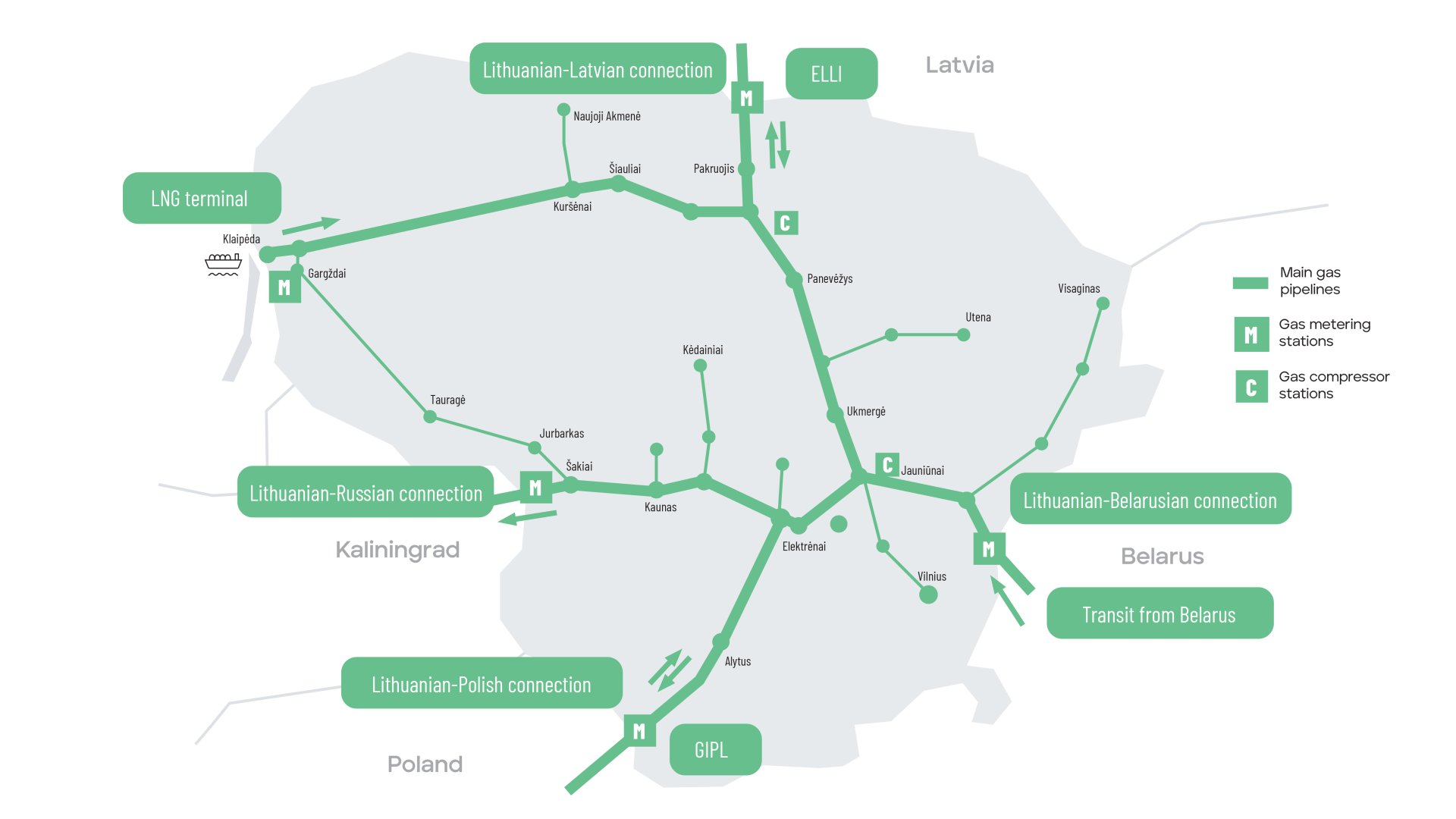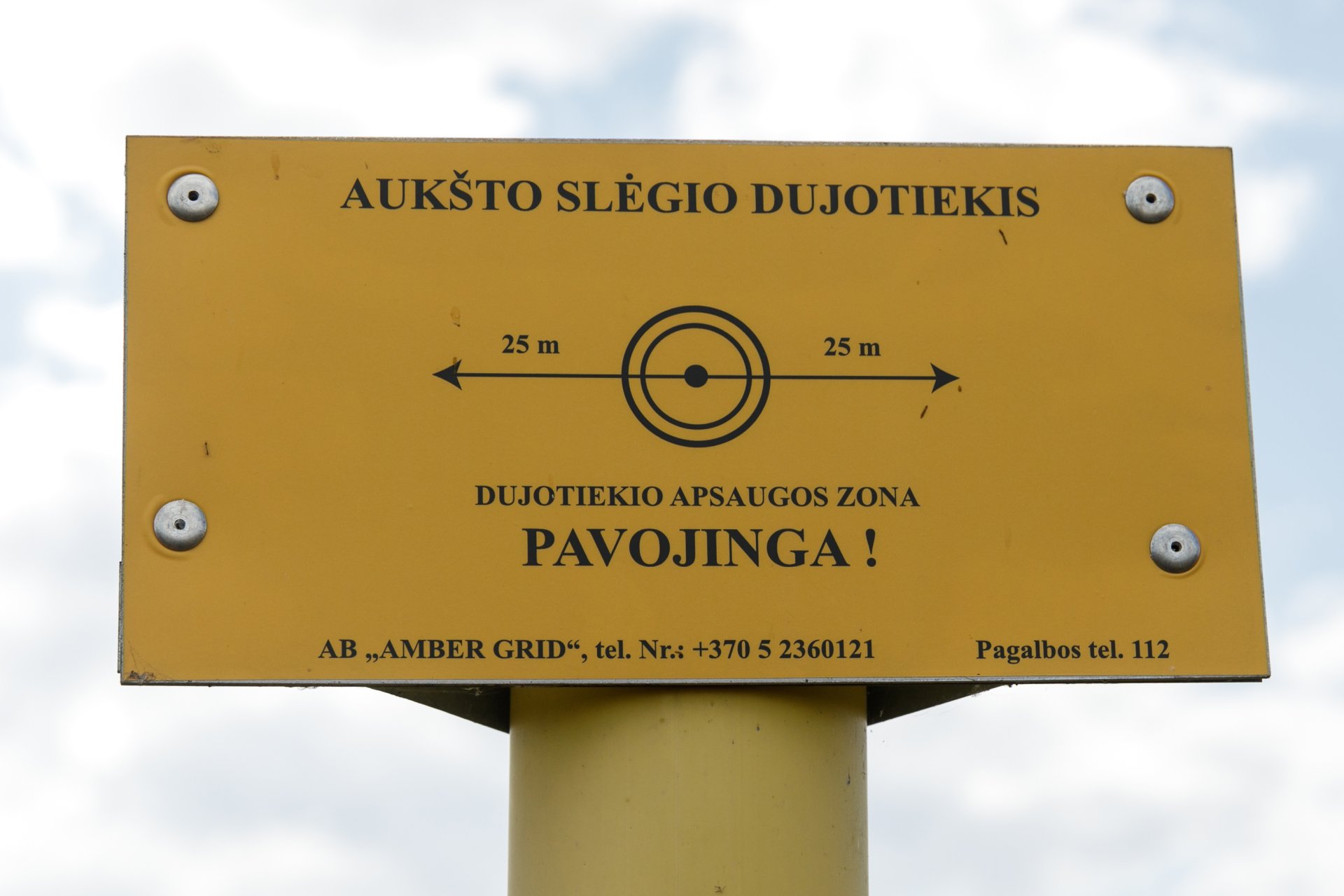What is important to know about the gas transmission system?
Amber Grid, the Lithuanian gas transmission system operator, manages the country's gas transmission system, which consists of main gas transmission pipelines used to transport gas at high pressure, gas distribution, gas compressor and metering stations, other structures and related infrastructure. Our system is usually installed underground and is therefore generally invisible. The routes of the main gas transmission pipelines are marked by bright yellow poles installed on the ground.

Our duty is to ensure a safe, efficient and effective operation, maintenance and development of the gas transmission system. Main pipelines are classified as potentially hazardous installations, and in order to ensure the safety of the gas transmission system, the adjacent environment and of people in close proximity, the legislation provides for a specific regime in areas adjacent to main pipelines.

In this context, the legislation imposes certain restrictions on activities in the vicinity of the gas transmission system (special land use conditions), which are divided into:
- restrictions within the protection zones of main transmission pipelines, including associated infrastructure. A protection zone is an area extending 25 metres in both directions from the axis of the pipeline or 25 metres from the fencing of the area protecting the gas transmission system facilities. The protection zone is intended for the protection of the gas transmission system and is regulated in the strictest manner.
- restrictions within the limits of class territories of the area. The class territory of the area of a main gas pipeline means a strip of land along the pipeline, the boundaries of which extend 200 metres on either side of the axis of the pipeline and 200 metres from its boundary points. The class of the area is a safety criterion that describes the main gas transmission pipeline and the strip of land along its route. The class of the area reflects the degree of risk of the main gas transmission pipeline and is related to the safety of the adjacent environment.
Protection zones differ from place class territories in their size and the stricter restrictions they impose on activities.
To conduct activities in these areas:
- Amber Grid's written consent must be obtained. For consent, please contact info@ambergrid.lt
- Amber Grid's consent to work in the gas pipeline protection zone must be obtained.
Here are the 4 most important facts to know about pipeline protection zones:
- Main gas transmission pipelines are potentially hazardous installations, so the protection zone helps to ensure that the pipeline operates smoothly and ensure the protection of not only the pipelines, but also the of residents and their property.
- Agricultural activities can be carried out in the protection zone as long as you don't dig deeper than 30 centimetres, store materials, plant trees, etc. Amber Grid's consent must be obtained for these activities.
- If a gas pipeline passes through your property, the land belongs to you, but you must ensure that it is not fenced. Amber Grid’s technicians must have a clear path to access the pipeline in case urgent repairs are needed.
High pressure gas transmission pipelines are potentially hazardous installations, thus the following is prohibited in their protection zones:
- Constructing buildings
- Carrying out excavation works
- Creating strong vibrations
- Storing chemicals and fertilisers
- Building fires and camping
We care to ensure that residents, businesses and people's property in close proximity to main gas transmission pipelines are safe in the event of an accidents. That's why we always follow laws and regulations when deciding on the possibility of planned construction in the vicinity of our maintained pipelines or other elements of the gas transmission system.
Please be invited to familiarise also get familiar the Rules for the Installation and Development of the Main Gas Transmission Pipeline and the Rules for the Protection of Main Gas Transmission Pipeline.
Most of the main gas transmission pipelines run through private land. Legislation of the Republic of Lithuania regulate landowners’ rights, obligations and compensation for the construction or reconstruction of pipelines on their land.
IMPORTANT! If you are planning to buy or rent a plot of land, or if you are planning other investments or activities, be sure to check for restrictions on the gas transmission system in the area you are interested in!
- You can check where the main gas transmission pipelines are located and where the special land use conditions have been registered on the REGIA geo-information environment map, which is regularly updated with the latest data to keep you up to date.
- You can see where the special land use conditions are registered in the SŽNS tool of the Real Property Register, which is regularly updated with the latest data to keep you up to date.
If you have any questions about the planned economic activity in the vicinity of the main gas distribution pipeline or related infrastructure, please contact info@ambergrid.lt

